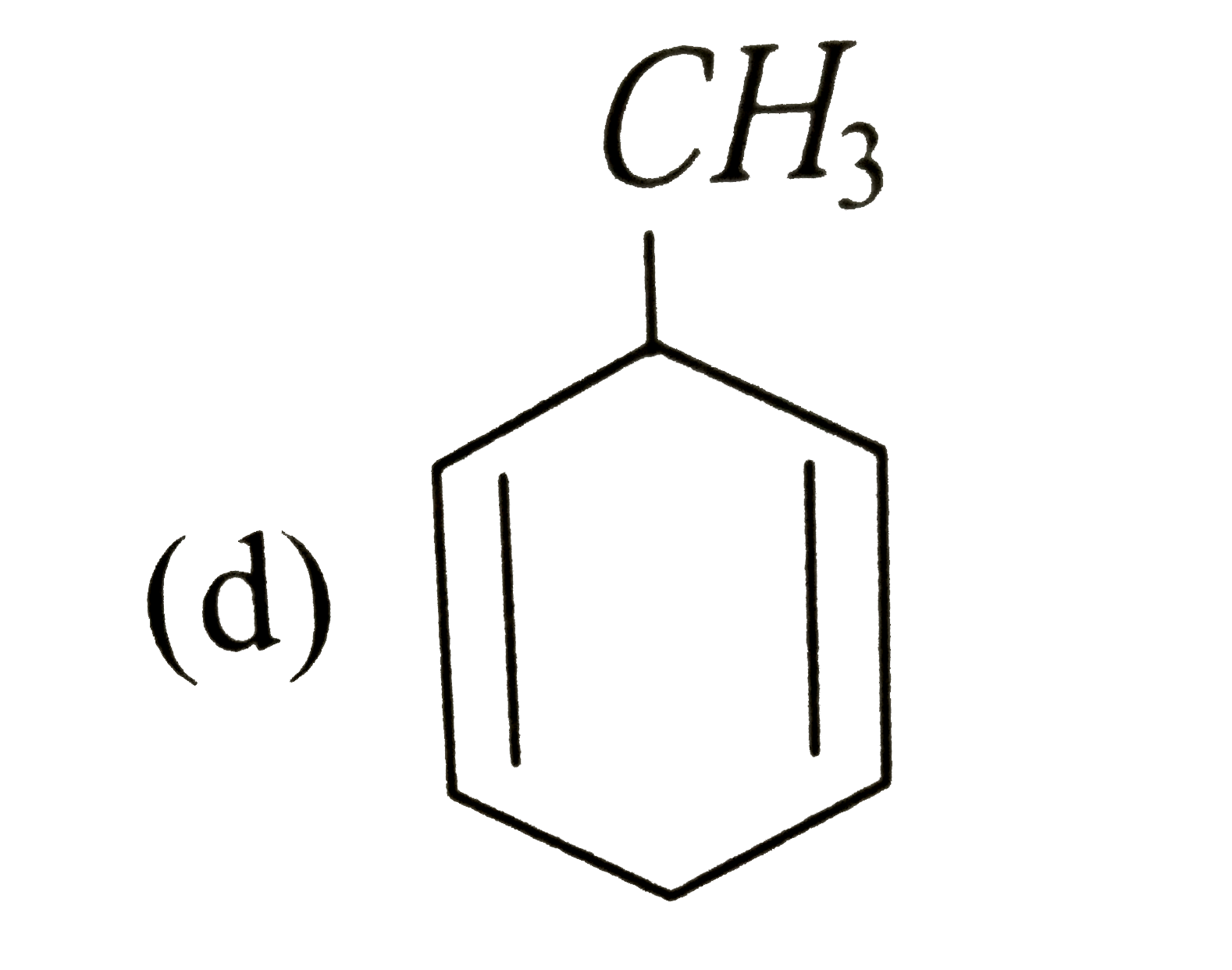Which one of the following on ozonolysis followed by oxidation will give adipic acid




The correct Answer is:B
To solve the question of which compound, when subjected to ozonolysis followed by oxidation, will yield adipic acid, we can follow these steps:
Step 1: Understand the Structure of Adipic Acid
Adipic acid is a dicarboxylic acid with the formula C6H10O4. Its structure can be represented as:
HOOC-CH2-CH2-CH2-COOH
This indicates that adipic acid has four carbon atoms (C) between the two carboxylic acid (COOH) groups.
Step 2: Identify the Ozonolysis Reaction
Ozonolysis is a reaction where alkenes react with ozone (O3) to form ozonides, which can then be hydrolyzed to yield carbonyl compounds (aldehydes or ketones). In the case of dicarboxylic acids, the ozonolysis of a compound with a double bond will break the double bond and form two carbonyl groups.
Step 3: Analyze Each Option
We need to analyze each option given in the question to see which one can yield adipic acid after ozonolysis and subsequent oxidation.
1. Option 1: Analyze the compound for double bonds. If it has a double bond that, upon ozonolysis, would yield two carboxylic acid groups with four carbon atoms in between, this would be our answer.
2. Option 2: Check the structure and see if ozonolysis leads to the formation of two carbonyl groups that do not correspond to the structure of adipic acid.
3. Option 3: Similar to option 2, analyze the structure and check if ozonolysis leads to the formation of the correct number of carbon atoms and functional groups.
4. Option 4: Again, check if ozonolysis leads to the formation of the correct structure.
Step 4: Determine the Correct Option
After analyzing all options:
- Option 1 is found to yield adipic acid upon ozonolysis followed by oxidation, as it has the correct structure and number of carbon atoms.
- Other options do not yield adipic acid as they either do not have the right number of carbons or do not form the required carboxylic acid groups.
Conclusion
The correct answer is Option 1.
Adipic acid is a dicarboxylic acid with the formula C6H10O4. Its structure can be represented as:
HOOC-CH2-CH2-CH2-COOH
This indicates that adipic acid has four carbon atoms (C) between the two carboxylic acid (COOH) groups.
Ozonolysis is a reaction where alkenes react with ozone (O3) to form ozonides, which can then be hydrolyzed to yield carbonyl compounds (aldehydes or ketones). In the case of dicarboxylic acids, the ozonolysis of a compound with a double bond will break the double bond and form two carbonyl groups.
We need to analyze each option given in the question to see which one can yield adipic acid after ozonolysis and subsequent oxidation.
2. Option 2: Check the structure and see if ozonolysis leads to the formation of two carbonyl groups that do not correspond to the structure of adipic acid.
After analyzing all options:
- Option 1 is found to yield adipic acid upon ozonolysis followed by oxidation, as it has the correct structure and number of carbon atoms.
- Other options do not yield adipic acid as they either do not have the right number of carbons or do not form the required carboxylic acid groups.
The correct answer is Option 1.
Topper's Solved these Questions
- HYDROCARBONBOOK - ERRORLESS CHAPTER - HYDROCARBONEXERCISE - ORDINARY THINKING (Objective question) (AROMATIC HYDROCARBON)
128 Videos
- HYDROCARBONBOOK - ERRORLESS CHAPTER - HYDROCARBONEXERCISE - CRITICAL THINKING (Objective questions)
24 Videos
- HYDROCARBONBOOK - ERRORLESS CHAPTER - HYDROCARBONEXERCISE - ORDINARY THINKING (Objective question) (ALKENE)
129 Videos
- HALOGEN CONTAINING COMPOUNDBOOK - ERRORLESS CHAPTER - HALOGEN CONTAINING COMPOUNDEXERCISE - Critical Thinking (Jee (Advanced) 2018)
1 Videos
- IONIC EQUILIBRIUMBOOK - ERRORLESS CHAPTER - IONIC EQUILIBRIUMEXERCISE - JS Jee Section (JEE Advanced (Numeric answer type question))
1 Videos
Similar Questions
Knowledge Check
Adipic acid is
AHOOC−(CH2)−COOHBHOOC−(CH2)3−COOHCHOOC−(CH2)4−COOHDHOOC−(CH2)6−COOHWhich of the following on reductive ozonolysis followed by reaction with base gives
 A
A B
B C
C D
D
Which of the following on oxidation followed by hydrolysis gives acetic acid ?
AAcetaldehyde cyanolydrinBAcetone cyanohydrinCFormaldehyde cyanohydrinDNone of these.
The compound which on acid hydrolysis followed by oxidation gives acetic acid is
View SolutionWhich one of the following on oxidation gives a ketone?
View SolutionWhich one of the following on oxidation gives a ketone?
View SolutionWhich one of the following on oxidation gives a ketone?
View SolutionWhich one of the following on oxidation gives a ketone?
View Solution
